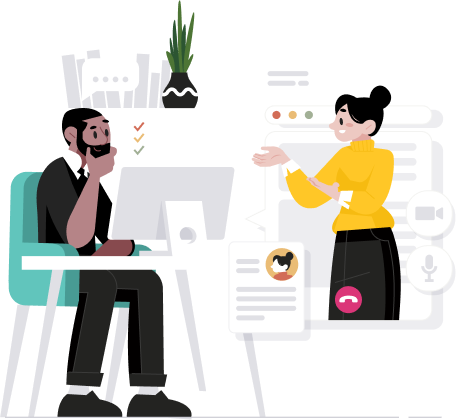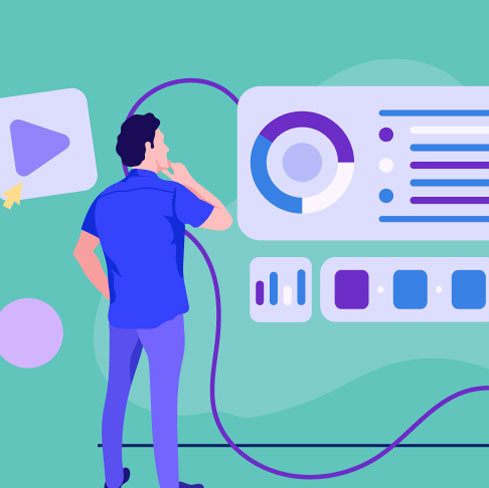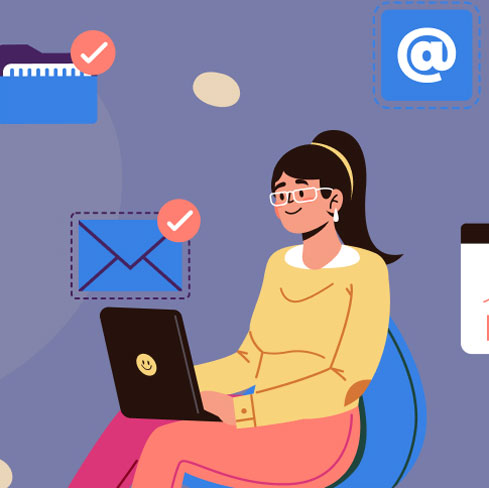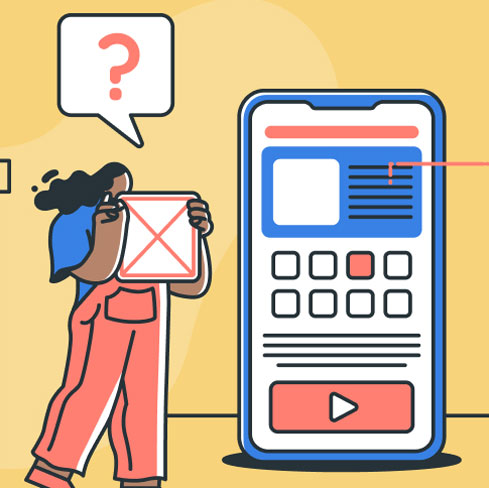Engaging with Users: Guidelines for Crafting Effective UX Research Interview Questions
December 1, 2023 | Read Time : 3 mins
Table of Contents
In the dynamic world of User Experience (UX) research, understanding user behavior, preferences, and expectations is the linchpin for creating resonant products. In this blog, we’ll uncover the rules and guidelines that can significantly enhance your approach to UX research interviews.
User understanding is paramount in successful product design, and interviews act as a direct conduit to your audience’s perspectives. By strategically framing questions, you not only glean valuable insights but also establish a meaningful connection with your users. This connection, rooted in well-constructed questions, facilitates a seamless link between user expectations and the design process, ultimately paving the way for a more gratifying and user-friendly experience. Let’s dive into the concise yet impactful rules that transform interviews into potent tools for user comprehension and design excellence.
Prepare for interview
Preparing for a UX interview is crucial to showcase your skills and understanding of user experience. Here’s a step-by-step guide on how to prepare for a UX interview:
- Research the Company: Understand the company’s values, culture, and offerings, including recent UX initiatives. Familiarize yourself with its design principles.
- Job Description Alignment: Carefully review the job description, identifying key skills. Align your experiences with outlined requirements.
- Portfolio Showcase: Update and organize your portfolio, ready to discuss challenges, methodologies, and outcomes of each project.
- Resume Insights: Discuss your resume in detail, highlighting experiences and skills that prepare you for the role.
- UX Fundamentals: Brush up on fundamental UX concepts, methodologies, and design principles. Be prepared to discuss your approach to key aspects like user research and prototyping.
- Behavioral Preparation: Anticipate behavioral questions using the STAR method. Share past experiences and how you handled specific situations.
- Industry Trends Awareness: Stay updated on UX design trends, showcasing your interest in industry best practices and emerging technologies.
- Design Challenge Readiness: Practice solving design problems within a time frame. Communicate your thought process clearly during challenges.
- Technical Skills Refresher: Brush up on relevant UX design tools. Showcase proficiency in creating prototypes, wireframes, and user flows.
- Thoughtful Questions: Prepare questions about the company’s design process, team dynamics, and role expectations, showcasing genuine interest.
- Communication Practice: Practice articulating your design decisions and project outcomes concisely. Pay attention to body language and maintain eye contact.
- Mock Interviews: Conduct mock interviews with a friend or mentor for practice and constructive feedback.
- Calm and Confident Demeanor: On interview day, remain calm, breathe before responding, and express enthusiasm for the opportunity, emphasizing your passion for UX design.

Conduct interview
As a UX developer, asking the right questions to your client is essential to understand their needs, goals, and expectations. Here are some UX-related questions you might consider asking your client
-
User and Audience Questions:
- Who is your target audience or user demographic?
- What are the primary goals of your users when interacting with your product?
- Do you have any user personas or profiles that we should consider?
-
Project and Business Objectives:
- What are the main objectives of this project from a business perspective?
- How does the success of this project align with your overall business goals?
- Are there specific key performance indicators (KPIs) you are aiming to improve through UX improvements?
-
Current Pain Points:
- Can you identify any specific pain points or challenges users currently face when using your product or service?
- Have you received any user feedback or complaints that highlight areas for improvement?
-
Competitor Analysis:
- Are there competitors or similar products in the market that you admire or consider as benchmarks for user experience?
- What are some areas where you believe your product could outperform competitors in terms of user experience?
-
Brand Guidelines and Identity:
- Are there specific brand guidelines or design elements that should be incorporated into the user experience?
- How would you describe your brand identity, and how should it be reflected in the user interface?
-
Functionality and Features:
- What are the core functionalities and features that users should prioritize within your product?
- Are there any specific features that you believe differentiate your product in the market?
-
Preferred Design Style:
- Are there any specific design styles or interfaces that resonate with your brand or that you find visually appealing?
- Do you have any preferences regarding color schemes, typography, or visual elements?
-
User Journey and Workflow:
- Can you walk me through the typical user journey or workflow within your product?
- Are there specific user paths or scenarios that are more critical to the success of your product?
-
Accessibility and Inclusivity:
- Importance of accessibility and any standards to adhere to?
- Considerations for internationalization or localization?
-
Timeline and Budget:
- Expected project timeline and key milestones?
- Budget range for UX development and any constraints?
These questions can help you establish a solid foundation for your UX development work by gaining a deeper understanding of your client’s goals and expectations. Adjust the questions based on the specific nature of the project and the client’s industry.
Determine the needed interview sessions
Determining the number of UX interview sessions required is a nuanced decision influenced by project complexity, user diversity, resource availability, and the iterative nature of the design process. For simpler projects, a smaller number of sessions may suffice, while more intricate endeavors may necessitate a larger sample size.
The diversity of the target audience is a crucial factor, as a comprehensive range of perspectives may require additional sessions. Additionally, considerations such as statistical significance, pilot testing, and alignment with project goals play roles in shaping the optimal number of interviews. An agile approach, involving stakeholders and allowing for iterative adjustments, ensures that the chosen quantity strikes a balance between thorough research and practical constraints. Ultimately, the number of UX interview sessions should align with the project’s unique requirements to yield meaningful insights for effective design decisions.
Types of interview
In the field of User Experience (UX), various interview types serve distinct purposes in gaining insights into user behaviors, preferences, and interactions. Here are key types of UX interviews:
- Usability Testing Interviews: Observing users interacting with a product to identify usability issues.
- Contextual Inquiry: Conducting interviews in the user’s natural environment to understand their behaviors and needs.
- Remote User Interviews: Conducting interviews online or via phone for remote user feedback.
- Card Sorting: Asking users to categorize information or features to improve information architecture.
- Cognitive Walkthrough: Evaluating a user’s ability to complete tasks step by step to identify usability issues.
- Expert Review Sessions: Engaging UX professionals to review a design and provide insights based on expertise.
- Customer Feedback Interviews: Gathering feedback from users to understand satisfaction and areas for improvement.
- Guerrilla Testing: Conducting impromptu testing with individuals in public spaces for quick feedback.
- Survey-Based Interviews: Distributing sets of questions to a larger user group for quantitative data on preferences.
- Prototype Testing: Having users interact with a prototype to gather insights into functionality and user experience.
These methodologies address various facets of UX research, spanning from comprehending user behavior to assessing usability and collecting feedback. The selection of a specific method is contingent upon the precise goals of the research and the developmental stage of the design process. Understanding these nuances helps tailor the approach to better meet the needs of the project and contribute to an enhanced user experience.
Additional Tips
Monthly Recurring Revenue (MRR) involves summing up the revenue generated from all active subscriptions during a specific month. Here’s a step-by-step guide on how to calculate MRR:
-
Visual Aids:
- Utilize visual aids, such as prototypes or wireframes, to enhance participants’ understanding.
- Visuals can facilitate discussion and provide a tangible reference point.
-
Record and Document:
- Record the interviews with participants’ consent for thorough analysis.
- Take detailed notes during the session to capture key insights and observations.
-
Encourage Honest Feedback:
- Create an environment where participants feel comfortable providing honest feedback.
- Assure them that there are no right or wrong answers, fostering openness.
-
Follow Up:
- Send a thank-you email to participants after the interview, expressing gratitude for their time and insights.
- Offer a summary of key points discussed for their reference.
-
Respect Time Constraints:
- Respect participants’ time by adhering to the scheduled interview duration.
- Efficiently manage time to cover essential topics without rushing.
-
Iterate and Refine:
- Embrace an iterative approach by refining your interview questions based on early findings.
- Continuously improve your interview process based on participant feedback and team reflections.
-
Multidisciplinary Collaboration:
- Collaborate with professionals from diverse disciplines, such as developers and marketers.
- To gain holistic insights, Incorporate different perspectives into the analysis to inform a well-rounded design approach.
-
Stay Informed:
- Stay abreast of current UX trends, tools, and methodologies to enhance your interview techniques.
- Attend UX conferences, webinars, or workshops to broaden your knowledge and skill set.






